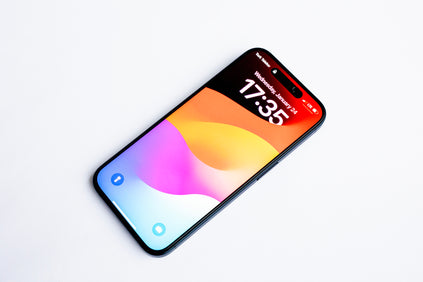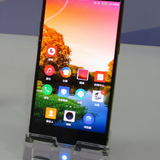What is an OLED?

The acronym ‘OLED’ stands for Organic Light-Emitting Diode. These devices use LED technology and use an organic material as a light emitting layer. Organic LEDs can produce high quality displays with high contrasts, high viewing angles and true blacks. Some say that OLEDs produce the world’s best display panels.
OLED deposition often needs to be done within an inert environment such as a glove box as these material are quite sensitive. This organic layer is sandwiched between two conductors. When an electrical current is applied, a bright light is emitted. This simple design offers many advantages over other display technologies such as liquid crystal displays. OLED materials are deposited as thin films using a spin coater.

In OLED display screens, each pixel is controlled individually and emits its own light (unlike LCDs in which the light comes from a backlighting unit). This is known as an emissive display. OLED displays deliver great image quality - bright colors, fast motion and most importantly - very high contrast. Most notably, “real” blacks (that cannot be achieved in LCDs due to the backlighting). The simple OLED design also means that it is relatively easy to produce flexible and transparent displays.
Where can OLEDs be found today?

Over 1 billion OLED panels are produced annually, by various display makers, and the market continues to grow as OLEDs offer better image quality, smaller form factors and flexibility - things that are hard to achieve with LCDs.
OLEDs are most popularly used to make OLED TVs - some of the world’s top TV panels are produced based on innovative OLED technology. Various TV companies use OLED technologies to produce award-winning premium OLED TVs, including LG, Phillips and Samsung.
These displays consistently achieve outstanding image quality and ultra-thin form factors. However, OLED TVs remain expensive due to their high production costs, especially over large areas.
OLEDs are also used in mobile devices - many high-end smartphones use them. For example, Apple's flagship iPhones have featured OLED displays since 2017, which offer vibrant colors and deep blacks. Additionally, the thin and versatile nature of OLED technology has made innovative new designs useful such as the Samsung Galaxy foldable phones.
Next-Generation Foldable and Rollable Displays

OLEDs are a relatively new display technology - and its continually developing at an impressive rate. While many flexible OLED panels are already in use today, next-generation displays are under development and promise innovations like foldable devices, followed by rollable and stretchable displays.
As early as 2008, foldable display screen technology was being discussed as an interesting prospect - but with OLED technology, this has become reality.
Foldable smart phones and tablets have been commercially available since 2018, including the Samsung Galaxy Fold and Flip series. As the technology develops, now over 1% of the worlds smart phone devices include flexible OLED technology.
OLED Device Structure
The basic OLED structure is simple - an organic emitter placed between two electrodes. But in order to create efficient and long-lasting devices, commercial OLEDs use several intermediate layers, like electron transport and blocking layers. The whole organic stack is placed between the electrodes, and this whole structure is deposited on the substrate (glass or plastic) and the display backplane (driver electronics). Some OLED displays on the market make use of dozens of different layers, one on top of the other.
OLED Production Processes
Currently, almost all OLED displays on the market are produced using an evaporation-based process, in which the OLED materials are deposited in a vacuum chamber. This has proven to be a great way to make OLEDs, but the process has its limitations - mainly material waste and high cost.
Companies are now developing next-generation deposition processes to enable more efficient production. One example is ink-jet printing, which makes use of soluble OLED inks that can be deposited using huge printers. This process is faster than the current evaporation process, and has almost no waste of materials. While there are still some challenges to overcome, it is expected that printed OLEDs will start entering the market soon - starting with TVs and monitor panels.
Within OLED research and development, smaller scale processes such as spin coating, slot die coating, and dip coating are used.
Examples of OLED Materials
The key feature of materials found in OLEDs is that they are organic (made from carbon and hydrogen). To conduct electricity well and convert it into light, different types of organic molecules are often used in combination. Nearly all organic OLED materials are made up of benzene (carbon atoms connected in a hexagon) units linked together. Many contain nitrogen to change the way electrons move through the molecule. These molecular design features have been optimized by researcher for converting charge into light.
OLED Emitter Material Generations
The first OLED devices used so-called fluorescence emitters (1st-gen emitters). These are relatively stable and easy to produce compounds, but their internal efficiency is limited to around 25% - only a quarter of the energy is translated into light.
2nd-generation OLED emitters, called phosphorescence OLEDs, dope these emitters with heavy metals (usually iridium) which enables an internal efficiency of up to 100%. As of today, very efficient red and green phosphorescence OLEDs are available on the market and most OLED displays make use of these emitters to create highly efficient emitters.
An efficient and long-lasting blue emitter material has proven extremely hard to produce, and companies are still struggling to develop this material. Any much-anticipated success in doing so would surely have a dramatic effect on the power efficiency of OLED displays. One option is to develop a blue phosphorescence OLED. However, in recent years, there has been the development of a 3rd generation of OLED materials - TADF materials that could acheive higher OLED device efficencies. Hyperfluorescence (4the generation) OLED technologies also show great promise.
Testing an OLED Device
Testing an OLED device involves simultaneously measuring its electrical and optical properties to generate a current-voltage-luminance (IVL) curve. This allows the power efficiency and brightness to be characterized. Lifetime testing is also important to ascertain how quickly an OLED will degrade over extended use.
So, What’s Next?
The future of OLEDs seems bright as their presence in the smartphone and TV markets is continuously growing, in addition to other markets (such as wearables, VR and more).
OLED technology is still an emerging technology, and many avenues are still open for new materials to be found and new processes to be developed that could further enhance OLED displays.
Glove Box

Keep Reading...
Phosphorescent organic light-emitting diodes (PhOLEDs) are a type of OLED technology that emits light using a process called phosphorescence. They’ve become popular because they’re much more energy-efficient than earlier versions of OLEDs.
Read more... OLED vs LED
OLED vs LED
A huge advantage of LED and OLED is their ability to produce luminescence without producing heat. But what are the main differences between LED and OLED?
Read more...


